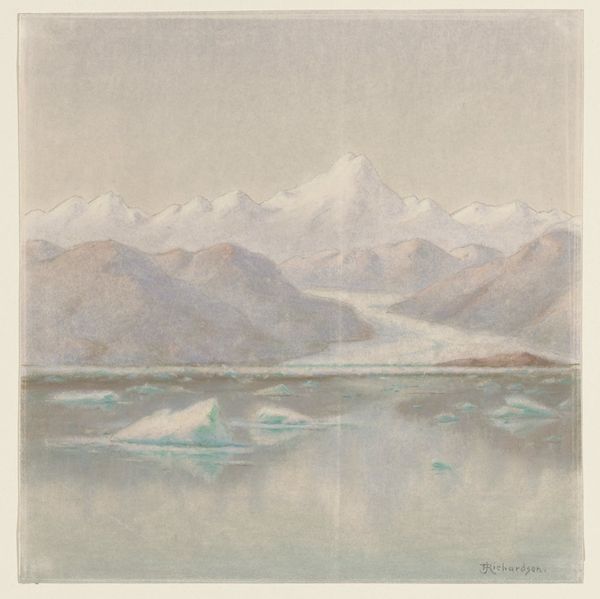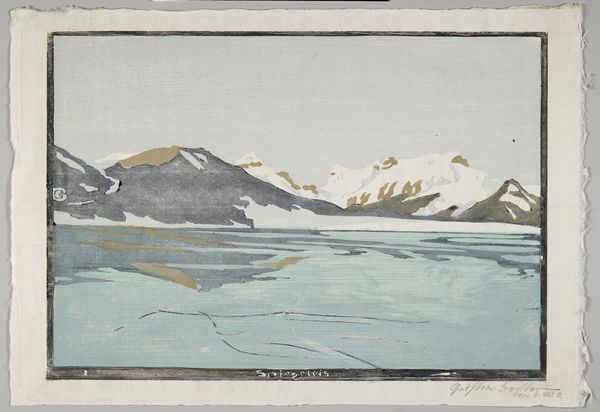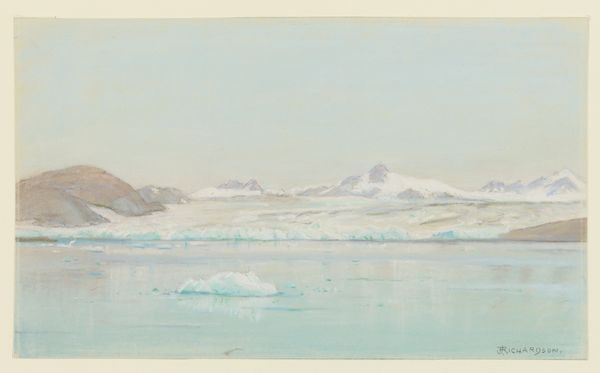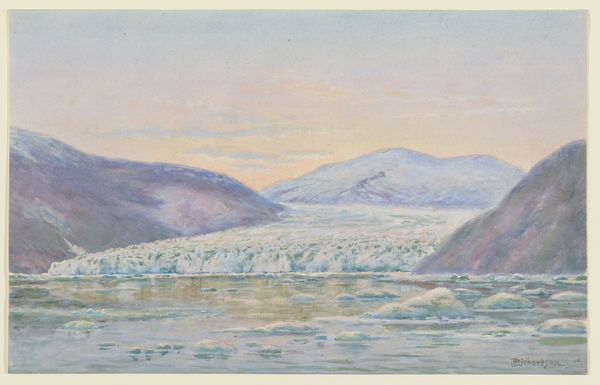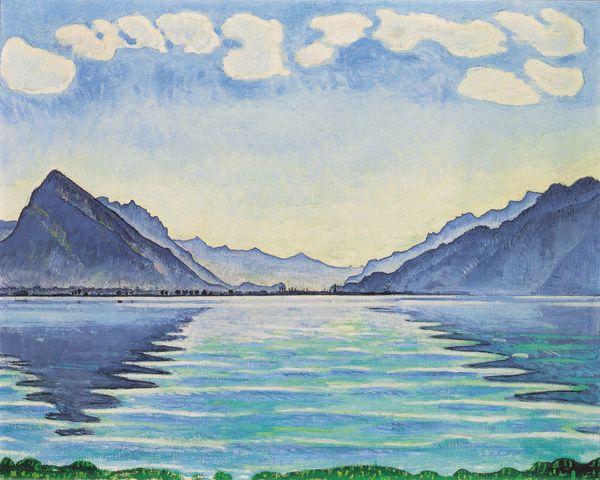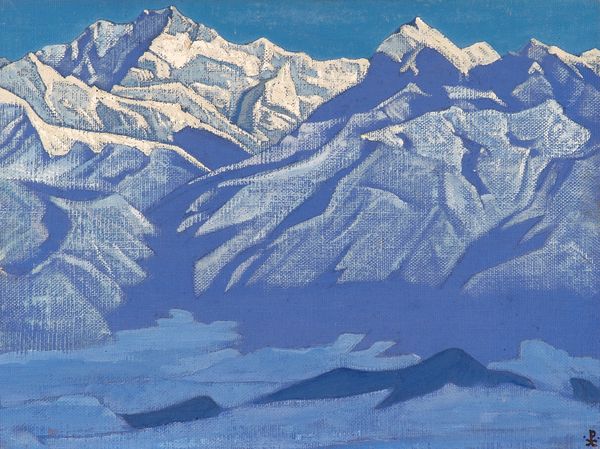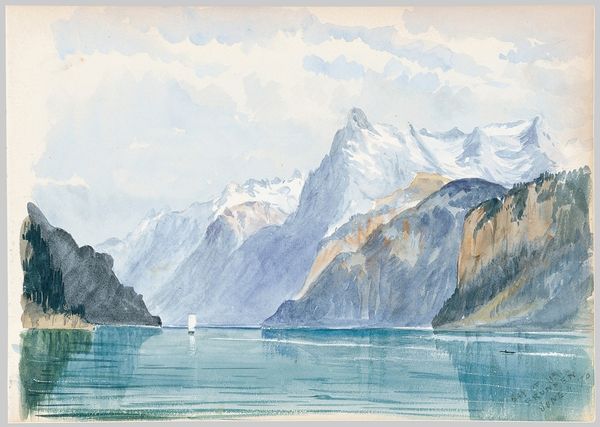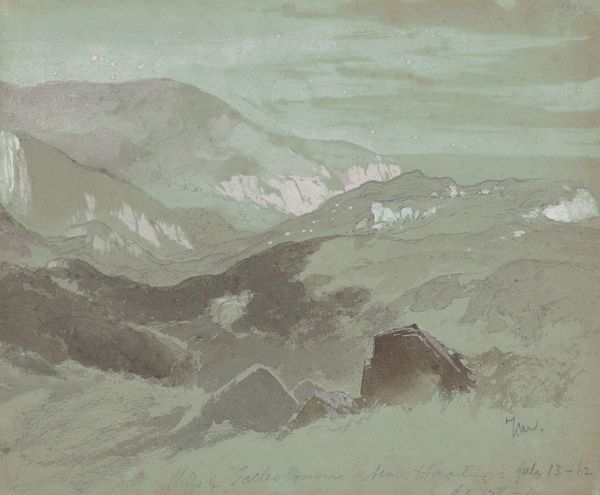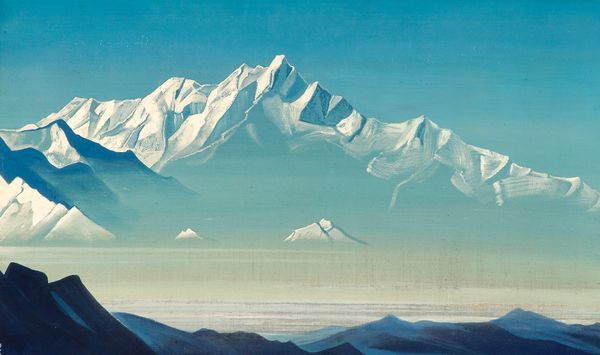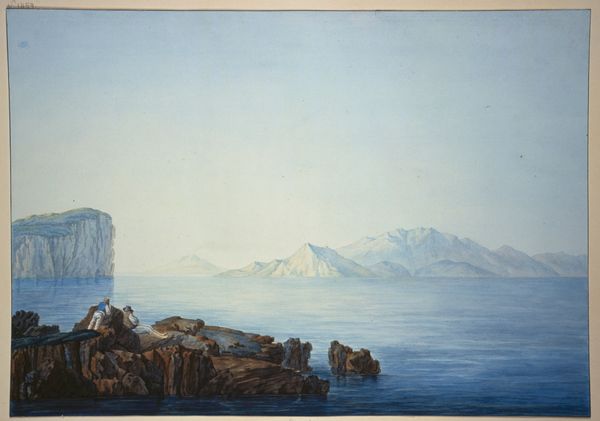
drawing, watercolor
#
drawing
#
water colours
#
landscape
#
oil painting
#
watercolor
#
cityscape
#
watercolor
Dimensions: 14 1/2 x 12 7/8in. (36.8 x 32.7cm)
Copyright: Public Domain
Curator: St. Elias Alps, dating from the 19th century and held here at the Minneapolis Institute of Art, presents us with a sublime, if serene, landscape executed in watercolor. What’s your immediate impression? Editor: The coolness is what strikes me first. The tonal range creates this sense of vast, icy stillness—a silence that’s almost deafening. The overall effect, particularly with those pale blues and greys, evokes a feeling of pristine isolation. Curator: Indeed. Let’s consider how Richardson, the artist, uses watercolor to achieve this. Notice the delicate washes, the subtle gradations of tone that suggest both immense distance and a specific atmospheric condition. The layering is quite skillful, particularly in rendering the mountain range. Editor: Absolutely. It’s interesting to consider how landscape painting of this period often served as a form of colonial claim-staking. While visually striking, the seemingly untouched vista served to normalize the narrative of exploration and control of wild frontiers. The lack of human presence amplifies the romantic ideal of untamed land awaiting "discovery". Curator: A potent perspective. And within that constructed vision, Richardson also crafts a very balanced composition. The horizontal bands – the water, the foreground, the mountain range and the sky– create a strong sense of stability and order. The floating icebergs provide an essential counterpoint, breaking up the water and preventing it from becoming overly monotonous. Editor: Also, in its time, images of glaciers and frigid landscapes helped shape public imagination regarding natural science. Expeditions to places like the St. Elias Alps documented not just territory but data: the composition and rendering can be perceived as tools in a quest to define the raw material and resources offered to colonizers by this landscape. Curator: So, you're reading into the very brushstrokes a visual argument, essentially, about possession. Editor: In a way, yes. This painting isn’t just a pretty picture. It’s part of a much larger dialogue around power, representation, and control. Curator: A vital reminder of art’s engagement within complex, sometimes contradictory histories. It compels us to look beyond the aesthetics. Editor: It certainly provides new angles to reflect upon the cool tranquility we first observed.
Comments
No comments
Be the first to comment and join the conversation on the ultimate creative platform.
